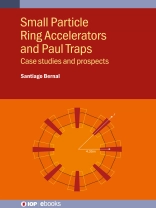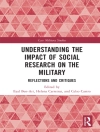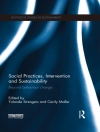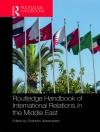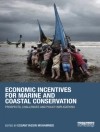This reference text covers the description, theory and history of room-sized or smaller ring accelerators and Paul traps for the exploration of advanced concepts and techniques in accelerator physics. The book describes the physics of five distinct small ring accelerators, or related devices, as case studies of scaled experiments to illustrate diverse accelerator and beam physics principles with potential applications to advanced larger machines: 1) small electron storage ring at University of Maryland; 2) larger electron/proton ring at Fermilab; 3) compact ion ring accelerator; 4) model fixed-field alternating gradient machine (a cyclotron/synchrotron-like device) that operated in the UK; and 5) Paul traps as RF (radio-frequency) very compact simulators of accelerators. The appendix summarizes basic scaling laws applicable to ring accelerators. It also includes a brief description of computer resources and examples for modelling accelerators.
Key Features
- Discusses the unique characteristics of five distinct machines for accelerator experiments that cannot be easily conducted in larger facilities
- Provides a concise but accurate presentation of key principles of beam and accelerator physics
- Describes the work of small groups from universities and/or national labs
- Contains an appendix summarizing key physics scaling laws applicable to accelerators, with worked examples
विषयसूची
1 Space charge and other physics at the University of Maryland Electron Ring (UMER)
2 Space charge in the isochronous regime at the Small Isochronous Ring (SIR)
3 Nonlinear optics and other physics at the Integrable Optics Test Accelerator (IOTA)
4 Fixed-field alternating gradient (FFAG) accelerators and the Electron Model for Many Applications (EMMA)
5 Betatron resonances and space charge: Paul traps as model accelerators
Appendix A: Physics scaling of particle ring accelerators
Appendix B: Computer codes
लेखक के बारे में
Santiago Bernal has been a research scientist for over 20 years at the University of Maryland, working in experimental and computational accelerator and beam physics. He obtained a BSc in physics from the Universidad Nacional de Colombia in Bogotá, Colombia, in 1981, an MSc in physics from Georgia Tech in 1983, and a Ph D in physics from the University of Maryland, College Park, in 1999. He is the author of A Practical Introduction to Beam Physics and Particle Accelerators, Third Ed. (IOP Publishing Ltd, 2022). In addition to beam and accelerator physics, Dr Bernal is interested in statistical mechanics and educational aspects of physics.
